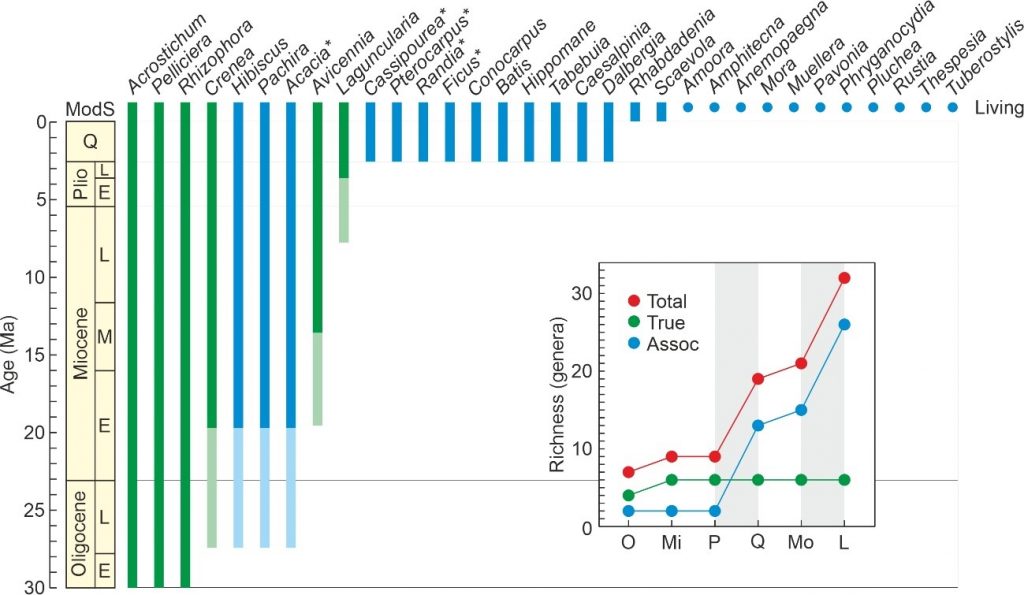Neotropical mangroves: ancient origin but recent diversification
- Neotropical mangrove communities originated in the Caribbean during the Eocene but did not attain their present diversity until the Quaternary.
- The Neogene-Quaternary diversification trend coincided with the Pliocene global cooling that preceded the Pleistocene glaciations.
As quoted in former Botanical Institute of Barcelona news about Neotropical mangroves, these coastal ecosystems emerged in the southern Caribbean coats, approximately 50 Ma (Middle Eocene), and experienced their major evolutionary turnover in the Eocene/Oligocene global disruption (34 Ma). A recent paper documents that, since then, these these emblematic communities remained relatively constant in composition until the Pliocene (5-2.5 Ma), when 23 of the 31 known extant genera (74%) of these communties appeared (Rull, 2023).

Emergence time and stratigraphic ranges of the characteristic Caribbean mangrove genera. True-mangove elements in green and associates in blue. Dots represent elements with not known fossil representatives.
The extant Neotropical mangroves are dominated by four main genera of mangrove-forming trees – Rhizophora (Rhizophoraceae), Avicennia (Acanthaceae), Laguncularia (Combretaceae) and Pelliciera (Tetrameristaceae) – and 26 associate genera. All true-mangrove elements (those restricted to these communities with special morphological and/or physiological adaptations to intertidal environments) were already present before the Pliocene, except Laguncularia. Among the associated genera, only three originated before the Pleistocene (the last 2.6 Ma), whereas the remaining 23 (88%) emerged during this period or later.
Floristically, the Neotropical mangroves are rather diverse as, in addition to the above-mentioned true and associate characteristic elements, nearly 180 species may be present conforming a total of 30 phytosociological associations with 85 diagnostic elements. Biogeographically, however, the Neotropical mangroves are far less diverse than the Indo-Malesian mangroves, which has been used to suggest that mangroves would have originated in the SE Asian region. However, empirical evidence supporting or rejecting this view remains to be found. The Caribbean mangroves are one more example of recent diversification, possibly linked to Pleistocene climate shifts, an idea that is gaining momentum in many regions and taxonomic groups.
Reference
Rull, V. 2023. The Neogene-Quaternary diversification trend in the shaping of modern Caribbean mangroves. Quaternary Science Reviews 300, 107920.














